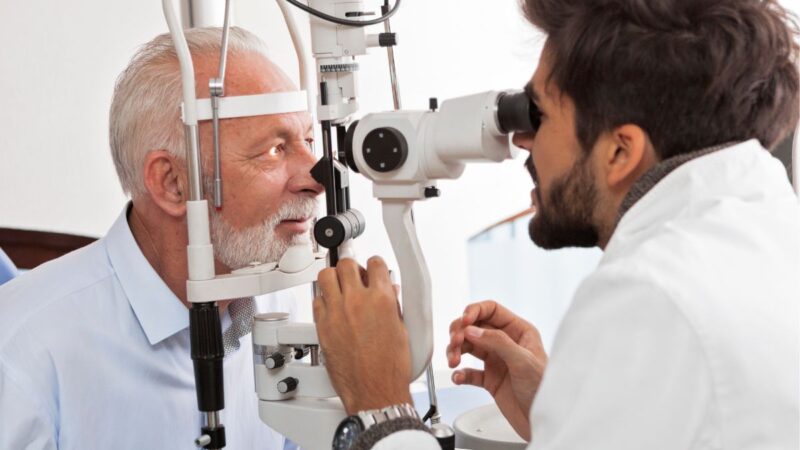The Advantages And Disadvantages of Different Refractive Surgeries for Boosted Eyecare

LASIK Surgical Procedure
LASIK surgical treatment is a frequently done refractive treatment that intends to deal with vision concerns such as astigmatism, nearsightedness, and farsightedness. This medical technique has actually gained popularity because of its efficiency in providing clients with clearer vision and reducing their dependency on glasses or contact lenses. Throughout the treatment, a thin flap is developed on the cornea, and a laser is used to reshape the underlying tissue, dealing with the refractive mistake. The flap is after that rearranged, enabling fast healing and marginal discomfort for the person.
Among the main advantages of LASIK surgical treatment is the rapid enhancement in vision experienced by numerous people. The majority of individuals observe a significant improvement in their sight soon after the procedure, with very little downtime needed for recovery. In addition, LASIK is understood for its high success price and low occurrence of complications when executed by knowledgeable cosmetic surgeons. Nonetheless, like any kind of operation, LASIK likewise lugs some threats, consisting of dry eyes, glow, halos, and under or overcorrection of vision. It is necessary for people considering LASIK surgery to undergo a complete analysis by an eye treatment professional to establish if they are appropriate candidates for the treatment.
PRK Treatment
The PRK treatment, likewise called Photorefractive Keratectomy, is a kind of refractive surgical treatment that intends to correct vision concerns similar to LASIK surgery. Unlike LASIK, which entails developing a flap in the cornea, PRK services the surface layer of the cornea. Throughout the PRK procedure, the external layer of the cornea, called the epithelium, is removed to enable improving of the underlying corneal tissue with an excimer laser. This improving helps to fix refractive errors such as farsightedness, astigmatism, and nearsightedness.
One of the advantages of PRK over LASIK is that it removes the danger of flap-related issues given that no flap is created throughout the surgical procedure. This can be beneficial for individuals with slim corneas or those associated with call sporting activities where eye trauma is a possibility. The healing time for PRK is typically longer compared to LASIK, as the external layer of the cornea requires time to restore after the treatment. Despite the longer healing duration, PRK can be an ideal option for people looking for vision correction surgical treatment.
SMILE Surgical Procedure
A cutting-edge refractive surgical treatment strategy acquiring popularity in the field of ophthalmology is SMILE Surgical treatment. Tiny Cut Lenticule Removal (SMILE) is a minimally intrusive treatment that corrects vision by improving the cornea making use of a femtosecond laser. Unlike typical LASIK surgical treatment, SMILE Surgery includes creating a small incision in the cornea to extract a lenticule, which leads to less disruption to the corneal structure and potentially quicker recovery times.
Among the key benefits of SMILE Surgery is its capability to deal with nearsightedness (nearsightedness) and astigmatism with high precision, bring about superb visual results for clients. The minimally invasive nature of the treatment additionally minimizes the danger of complications such as completely dry eye syndrome, making it a beneficial alternative for people seeking refractive surgical treatment.
LASEK Method
Having discovered the advantages and considerations of SMILE Surgical procedure, another noteworthy refractive surgical procedure method worth examining is the LASEK Strategy. LASEK, which means Laser-Assisted Subepithelial Keratectomy, is a type of laser eye surgical treatment that aims to remedy refractive errors such as myopia (nearsightedness), hyperopia (farsightedness), and astigmatism.
Unlike LASIK, LASEK does not involve producing a corneal flap. Rather, throughout a LASEK procedure, the doctor uses a watered down alcohol option to loosen up the thin external layer of the cornea, known as the epithelium.
One of the primary benefits of LASEK is that it can be ideal for people with slim corneas who may not be excellent prospects for LASIK. Furthermore, LASEK normally leads to minimal post-operative pain and a quicker recuperation time compared to PRK. The aesthetic recuperation process with LASEK may be a little longer than with LASIK.
Implantable Call Lenses
Implantable Get in touch with Lenses supply a long-lasting vision improvement option for individuals seeking an alternative to conventional contact lenses or glasses. These lenses, also referred to as phakic intraocular lenses, are surgically put right into the eye to deal with refractive errors such as nearsightedness (nearsightedness), hyperopia basics (farsightedness), and astigmatism. cardiologist andalusia. Unlike conventional call lenses that rest on the surface area of the eye, implantable get in touch with lenses work within the eye itself, supplying clear vision without the demand for day-to-day maintenance or removal
One of the crucial advantages of implantable call lenses is their permanence. When placed, they can stay in the eye forever, using consistent and secure vision adjustment. Additionally, these lenses can be a superb choice for individuals who are not great prospects for laser eye surgery or who choose a reversible vision adjustment procedure.
However, implantable get in touch with lenses do carry some risks, consisting of the possibility for cataracts or enhanced eye stress. It is vital for people considering this alternative to talk to an click for more info eye treatment professional to identify if implantable call lenses are the right option for their details needs and eye health and wellness.
Verdict
In final thought, each type of refractive surgery has its very own advantages and downsides. LASIK surgery is popular for its quick recuperation time, while PRK procedure may be suitable for individuals with slim corneas.

On The Whole, SMILE Surgical treatment provides an encouraging alternative for people looking to improve their vision with refractive surgery.